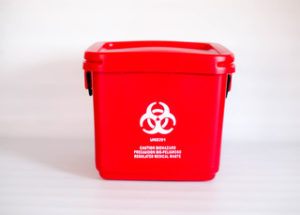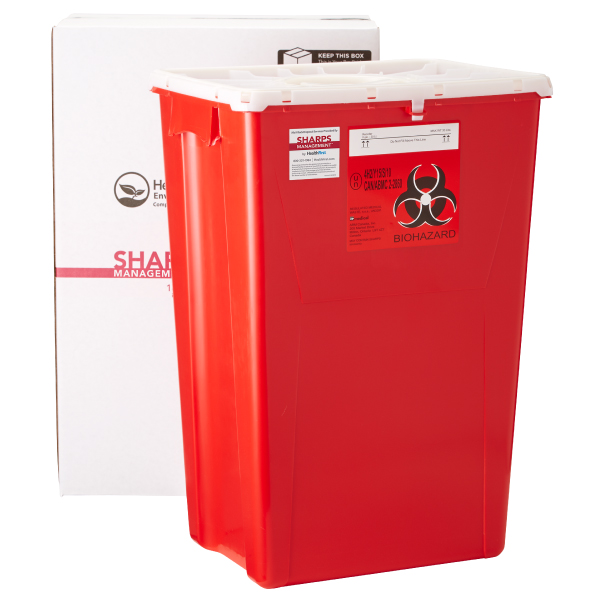Streamlined Solutions: Simplifying Medical Care Procedures with Specialist Medical Waste Disposal
Streamlined Solutions: Simplifying Medical Care Procedures with Specialist Medical Waste Disposal
Blog Article
Exploring Various Waste Disposal Options for a Cleaner Setting
In the quest of a cleaner setting, the monitoring of garbage disposal has actually emerged as an important centerpiece for lasting growth. With a plethora of waste disposal choices readily available, varying from standard garbage dump approaches to cutting-edge waste-to-energy technologies, the choice of just how we manage our waste has significant effects for our earth's well-being. By taking a look at the numerous approaches and techniques employed in recycling, composting, incineration, landfill management, and waste-to-energy processes, a much deeper understanding of their impacts and performance can be obtained. The mission for optimal waste disposal methods that prioritize environmental preservation while fulfilling the needs of a growing population remains a pressing concern in today's globe.
Recycling Techniques
Executing efficient reusing approaches is important in reducing waste and promoting sustainability in our environment. Reusing involves the process of converting waste products into recyclable objects to avoid unneeded disposal. Among one of the most typical recycling approaches is material recovery, where products like paper, metal, plastic, and glass are accumulated, sorted, and refined to develop brand-new products. This process not only conserves all-natural resources however likewise minimizes power consumption and greenhouse gas exhausts connected with producing new materials from scrape.
An additional crucial recycling technique is composting, which includes disintegrating organic waste like food scraps and yard trimmings right into nutrient-rich dirt. This procedure not only diverts organic waste from land fills but additionally creates an important source for gardening and farming. Additionally, upcycling is an innovative recycling method that includes transforming old or discarded materials into items of better or worth. By incorporating these different recycling methods right into our waste monitoring methods, we can substantially minimize our environmental impact and move in the direction of a more lasting future.

Composting Strategies
Effective waste administration methods, such as recycling methods, lead the way for a cleaner environment, and now, changing the emphasis to 'Composting Techniques', we explore sustainable means to break down organic waste for ecological advantage. medical waste disposal.
Composting is an all-natural procedure that changes organic waste, like food scraps and yard trimmings, right into a nutrient-rich dirt amendment. The key to successful composting exists in producing the appropriate equilibrium of environment-friendly products, such as vegetables and fruit scraps, and brownish products, like dried branches and fallen leaves. These materials disintegrate with the aid of microorganisms, breaking down the waste into beneficial garden compost.
Traditional yard composting entails layering organic products in a bin or pile and on a regular basis turning the mix to freshen it. By making use of composting methods, we can lower the amount of waste sent out to garbage dumps while producing a useful item for enriching soil and sustaining plant development.
Incineration Advantages And Disadvantages
Incineration, as a waste disposal technique, provides both advantages and disadvantages that warrant mindful factor to consider in the world of lasting waste monitoring practices. On the favorable side, incineration can significantly lower the quantity of waste, minimizing the demand for landfill space and possibly decreasing greenhouse gas discharges.
However, there are notable drawbacks to incineration. One major concern is the potential launch of unsafe contaminants right into the air, such as dioxins, heavy steels, and particulate issue, which can have adverse results on human health and the atmosphere. Furthermore, the high preliminary investment and operational costs of incineration centers position financial difficulties, making it a less cost-effective option contrasted to other waste monitoring methods. Cautious surveillance and regulation are essential to reduce these negative impacts and take full advantage of the advantages of incineration as component of an extensive waste administration approach.
Land Fill Administration Techniques
Landfills play a critical role in waste management and ecological preservation by supplying a control system for the disposal of solid waste materials. Efficient land fill administration techniques are necessary to reduce environmental influences and ensure the long-lasting sustainability of these garbage disposal sites. One key method appertains waste compaction to make the most of the use of readily available space within the garbage dump (click here). By compacting the waste, the volume is lowered, enabling for even more waste to be accommodated in time.
Furthermore, the execution of everyday cover practices is crucial in reducing smells, protecting against litter, and lowering the attraction of insects. Covering the disposed waste at the end of each day aids to consist of smells and prevent possible environmental contamination. In addition, the surveillance of land fill gas exhausts and leachate levels is important in guaranteeing that environmental requirements are satisfied and that any possible risks to surrounding communities are reduced.

Waste-to-Energy Technologies
Among the cutting-edge methods to squander administration involves using Waste-to-Energy technologies to transform strong waste into usable power sources. Waste-to-Energy (WtE) innovations encompass an array of processes that intend to remove power from waste products with thermal, chemical, or organic means. This conversion procedure not this website just decreases the quantity of waste that finishes up in land fills yet also generates valuable power resources such as electrical energy, warm, or biofuels.
Incineration entails burning waste at high temperatures to create warmth and electricity. Gasification converts waste right into a syngas, which can be made use of for power generation or chemical manufacturing.
Executing Waste-to-Energy innovations can help reduce environmental concerns associated with conventional waste disposal techniques while at the same time giving a renewable resource resource. Cautious consideration should be given to emissions control and making sure the sustainability of feedstock materials for these modern technologies to be really beneficial for a cleaner setting.
.jpg)
Verdict
In conclusion, checking out numerous garbage disposal options such as recycling, composting, incineration, garbage dump management, and waste-to-energy innovations is vital for promoting a cleaner setting - click here. Each approach has its very own advantages and difficulties, but by using a mix of these techniques, we can function in the direction of reducing the amount of waste that winds up in land fills and ultimately contribute to a much more sustainable future for generations ahead
With a multitude of waste disposal alternatives offered, varying from conventional land fill methods to cutting-edge waste-to-energy modern technologies, the choice of how we manage our waste has far-ranging implications for our earth's health. medical waste removal service.Incineration, as a waste disposal technique, provides both benefits and disadvantages that merit cautious factor to consider in the realm of sustainable waste administration practices.Land fills play an essential duty in waste management and ecological conservation by offering a containment system for the disposal of strong waste materials. By compacting the waste, the volume is lowered, permitting for more waste to be suited over time
One of the cutting-edge methods to throw away management includes harnessing Waste-to-Energy innovations to convert solid waste right into functional power resources.
Report this page